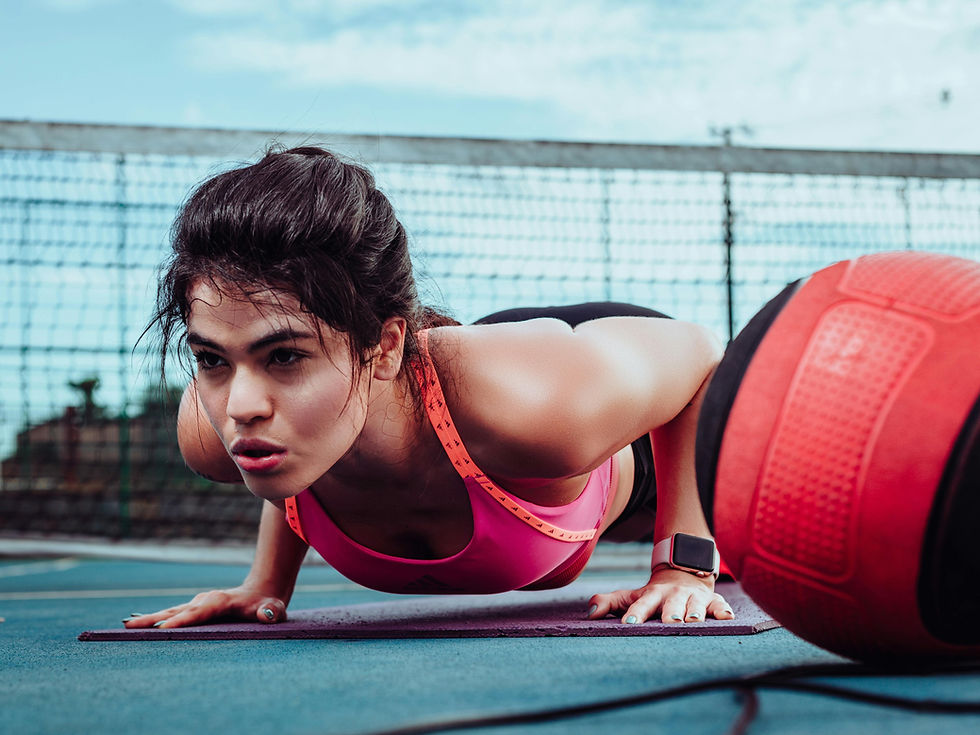Mastering Deadlifts: Variations and Progressions for Optimal Strength
- Scott Ryan

- Nov 7, 2023
- 3 min read
The deadlift is a powerful compound exercise that targets multiple muscle groups and is considered one of the fundamental movements in strength training. It involves lifting a barbell or other weighted object from the ground, mimicking the motion of picking up heavy objects. Deadlifts not only build overall strength but also enhance posture, increase grip strength, and promote functional movement patterns. In this article, we will explore various deadlift variations and progressions to help you maximize your strength gains.

Conventional Deadlift
The conventional deadlift is the most common variation and forms the foundation for other deadlift styles. To perform it, stand with your feet shoulder-width apart, keeping the barbell centered over your midfoot. Bend your knees and grip the barbell just outside your shins. Engage your core, lift the bar by driving through your heels, and fully extend your hips and knees at the top of the movement. Lower the bar in a controlled manner, keeping it close to your body.
Sumo Deadlift
The sumo deadlift places more emphasis on the legs and glutes and is characterized by a wide stance. Position your feet wider than shoulder-width apart, with your toes pointing out at a slight angle. Grip the barbell with your hands inside your legs. Initiate the lift by driving your feet into the ground, extending your hips, and straightening your knees. Lower the bar with control, maintaining the same wide stance throughout the movement.
Romanian Deadlift (RDL)
The Romanian deadlift targets the posterior chain, particularly the hamstrings and glutes. Start with the barbell in front of your thighs, maintaining a shoulder-width stance. While keeping your knees slightly bent, hinge at the hips and lower the barbell by pushing your hips back. Maintain a neutral spine throughout the movement and stop when you feel a stretch in your hamstrings. Return to the starting position by squeezing your glutes and extending your hips.
Single-Leg Deadlift
The single-leg deadlift is an excellent exercise for developing balance, stability, and unilateral strength. Begin by standing on one leg, slightly bending the knee. Hold a dumbbell or kettlebell in the opposite hand of the supporting leg. Hinge at the hips and lower the weight while extending the non-supporting leg behind you. Keep your core engaged and maintain a straight line from head to heel. Return to the starting position and repeat on the other leg.
Progressions
To continually challenge your strength and improve deadlift performance, consider the following progressions:
Increase Load: Gradually add more weight to the barbell while maintaining proper form. Progressive overload is essential for strength gains.
Tempo Training: Vary the tempo of your lifts to introduce new challenges. For example, perform slower eccentric (lowering) phases or pause at certain points during the movement.
Deficit Deadlifts: Elevate your feet on a platform or use smaller plates to increase the range of motion. This variation further engages the muscles of the posterior chain.
Barbell Hip Thrusts: Strengthen your glutes and improve hip extension by incorporating barbell hip thrusts into your routine. This exercise complements deadlifts and enhances overall lower body strength.
Deadlifts and their variations offer a multitude of benefits, including increased strength, improved posture, and enhanced functional movement patterns. By incorporating different deadlift styles and utilizing progressions, you can continually challenge your muscles and achieve optimal results. Remember to prioritize proper form and gradually increase the intensity to minimize the risk of injury and maximize your deadlift gains.
Scott Ryan, BS, CSCS, CF-L1, CF-W, BFRC
A professional coach who specializes in Applied Functional Science, Strength and Conditioning, CrossFit L1, and Olympic Lifting. He attended New England College in New Hampshire obtaining a bachelor's degree in Kinesiology with an emphasis on Biomechanics. He has a passion for injury prevention and coaching, as he was a collegiate athlete who suffered sports injuries. His goal is to get athletes back to optimal shape as well as prevent future injuries.



Comments